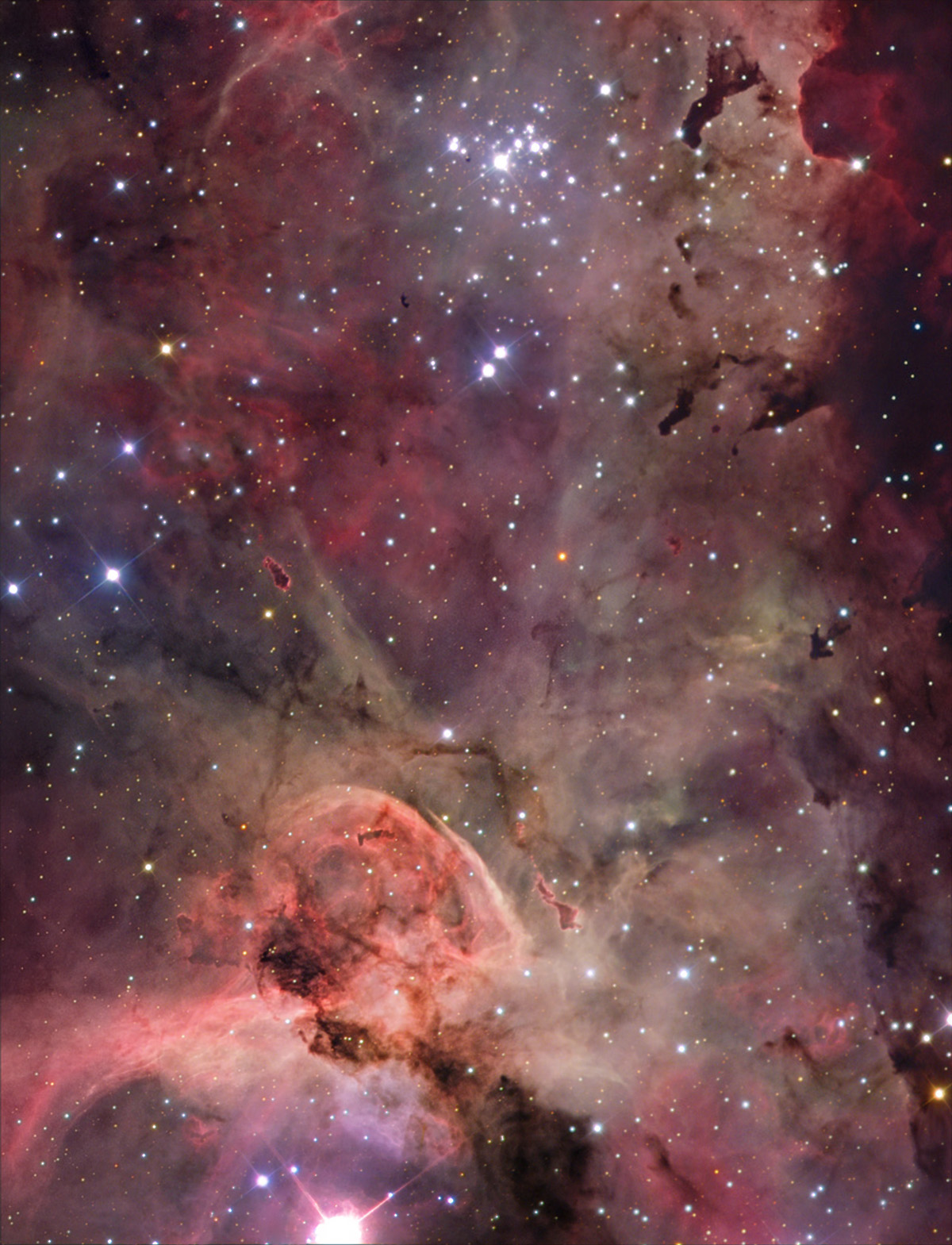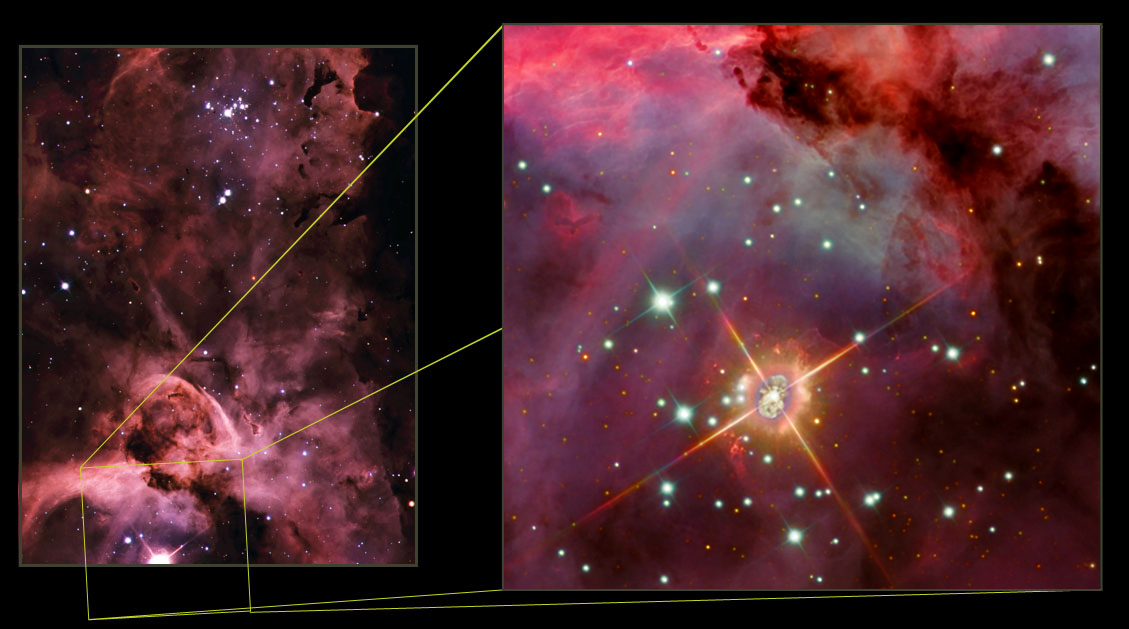
[back] NGC 3372 (Eta Carinae + Homunculus Nebula) in Carina [NED]

|
(c) 2004 All astro photo images are copyrighted. They may not be used or reproduced without explicit written permission from the authors. |
|
60" |
|
About this Image / Über dieses Bild
| CCD: | ST10 XME |
| Image Type, Orientation: | Ha-RGB Composite 1x2 Mosaik, North is at 10:30h |
| Exposure time: | for each of the two mosaic frames: Ha: 6x180 sec. 1x1 bin, R,G,B: 3x180 sec. 2x2 bin |
| Exposure date: | May 13th, 2004 |
| Location: | Capella Observatory at Amani Lodge, Kupferberg near Windhoek, Namibia |
| Filter: | FR03 + Astronomik Typ II H-Alpha,RGB filters |
| Instrument: | Ganymed 60cm-Hypergraph in secondary focus, f=4800 mm |
| Image seeing (FWHM): | 2.0" |
| Photographer: | Rainer Sparenberg, Stefan Binnewies, Volker Robering |
| Remarks: |
The
irregularily variable star Eta Carinae (the bright star at the lower edge in
the upper image) is a very massive, instable star. In its very active
history Eta Carinae reached a brightness of magnitude 2 around the year
1730, dimmed down to mag 4 and reached a maximum of -0.8 mag in 1843, beeing
the second brightest star in the sky. Currently its brightness is 6.5 mag.
These strong differences of brightness have changed the illumination of the
surrounding nebulae, especially the so-called 'Homunculus'-nebulae (
Homunculus is a latin word and means artificial human being without soul)
directly around Eta Carinae. |
|
|
|
| Bemerkungen: | Der unregelmäßig variable Stern Eta Carinae (im Bild oben
direkt am unteren Bildrand) ist ein sehr massereicher instabiler Stern. In
seiner bewegten Vergangenheit erreichte er um 1730 die zweite
Helligkeitsklasse, ging dann zurück auf 4 mag um 1843 seinen bisherigen
Glanzpunkt mit -0,8 mag, als zeitweise zweithellster Stern des Himmels
überhaupt zu erreichen. Zur Zeit liegt die Helligkeit bei 6,5 mag. Diese
unterschiedlichen Helligkeiten haben die Beleuchtungsverhältnisse des den
Stern umgebenden Nebels verändert. Betroffen ist davon ganz besonders der
als Homunculus bekannte 18“ große Nebel, der wegen Überstrahlung im
Hauptbild unten rechts in einem Extrabild (links die entsprechende Stelle im
Hauptbild) dargestellt ist. Das Bild wurde mit Hilfe von CCD-Sharp bearbeitet |

|
(c) 2004 All astro photo images are copyrighted. They may not be used or reproduced without explicit written permission from the authors. |
|
60" |
|
Data for the Image of the Homunculus Nebula / Daten für das Bild des Homunculus-Nebels
| Image Type, Orientation: | Ha-RGB Composite, North is at 10:45h |
| Exposure time: | Ha: 10x1 sec. 1x1 bin, R,G,B: 10x20 sec. 2x2 bin |
| Exposure date: | May 8th (R,G,B) and 13th (Ha) , 2004 |
| Location: | Capella Observatory at Amani Lodge, Kupferberg near Windhoek, Namibia |
| Filter: | FR03 + Astronomik Typ II H-Alpha,RGB filters |
| Instrument: | Ganymed 60cm-Hypergraph in secondary focus, f=4800 mm |
| Image seeing (FWHM): | 1.7" |
Back to the Diffuse Nebulae Overview / Zurück zur Diffuse-Nebel-Übersichtsseite